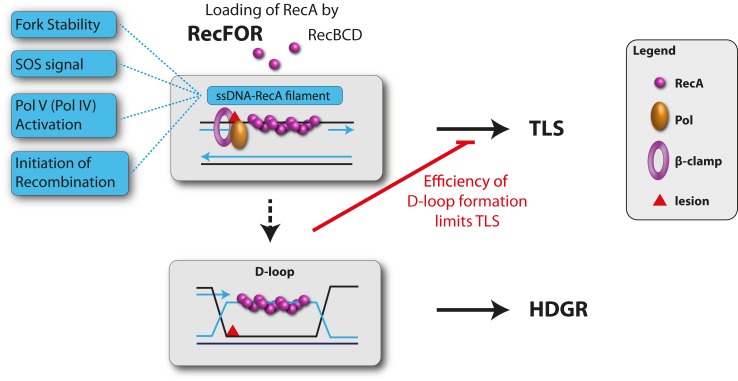Figure 5.
Crosstalk between TLS and HDGR: When the fork encounters a replication-blocking lesion in one of the template strands, it skips over the lesion via downstream re-priming leaving a single-stranded gap. These single-stranded DNA gaps become converted into ssDNA.RecA filaments, the so-called SOS signal; loading of RecA on single-stranded DNA gaps is catalyzed by RecFOR recombination mediator proteins that help displace SSB from ssDNA. Recent evidence suggests that RecBCD partially contributes to ssDNA.RecA filament formation as well (47). Once formed, the ssDNA.RecA filament plays several important roles: (i) SOS induction leading to increased TLS polymerase expression, (ii) activation of Pol V, i(ii) stability of the fork and (iv) initiation of homologous recombination. In the present paper we show that TLS is increased in strains carrying recA alleles that are partially defective in D-loop formation. This increase in TLS is due to increased persistence of the ssDNA.RecA filament that in turn induces both TLS polymerase expression and the time during which the TLS substrate persists. The role of increased persistence of the TLS substrate on the extent of TLS, was also directly evidenced in recF (or recO) strains (see text). As soon as the ssDNA.RecA filament invades the homologous sister chromatid and forms a D-loop, i.e. an early HDGR intermediate, the TLS reaction is turned off by mere substrate sequestration. This model defines a chronological competition between TLS and HDGR, the time window for TLS closes upon initiation of recombination.

